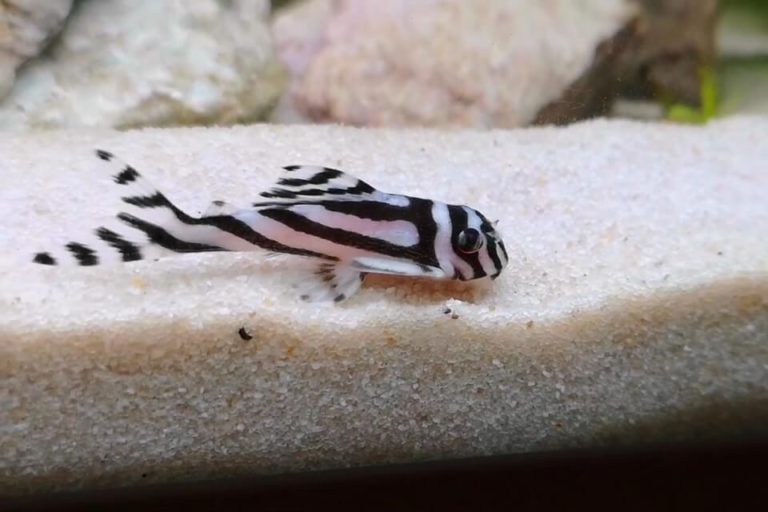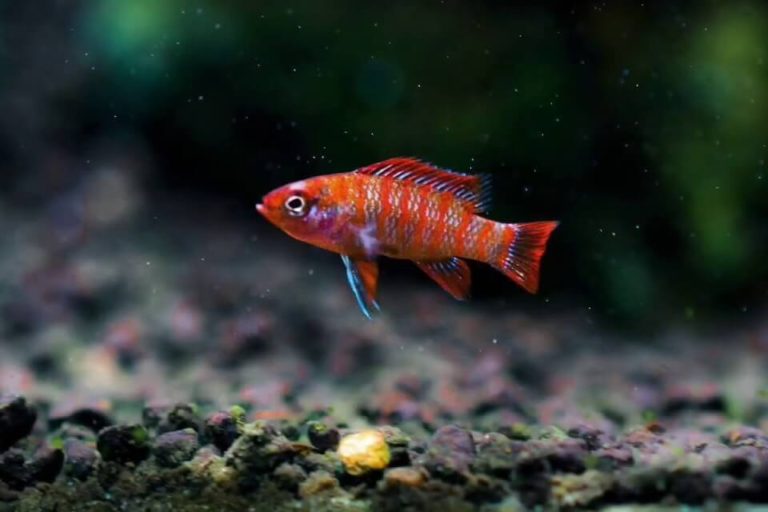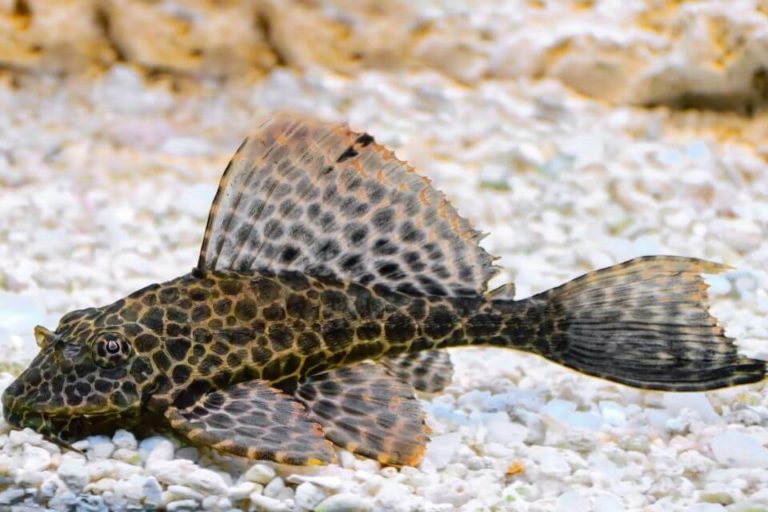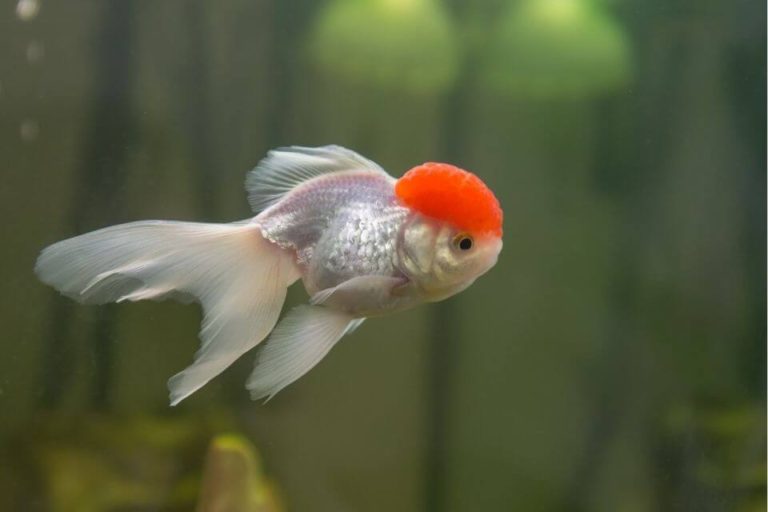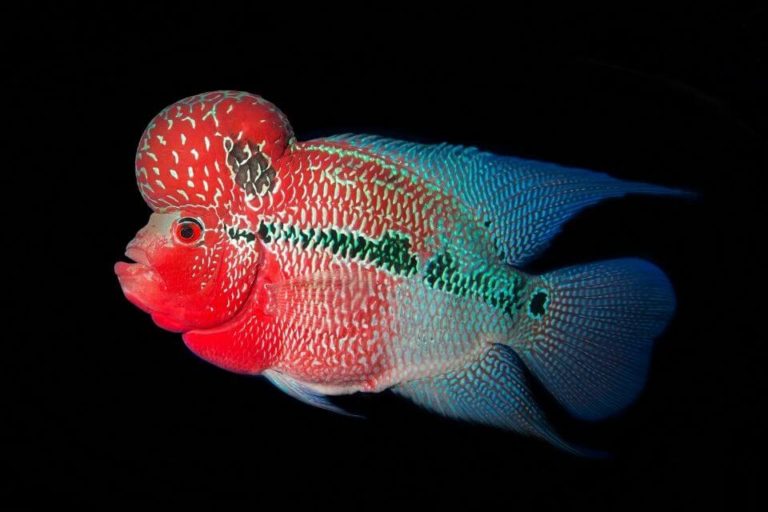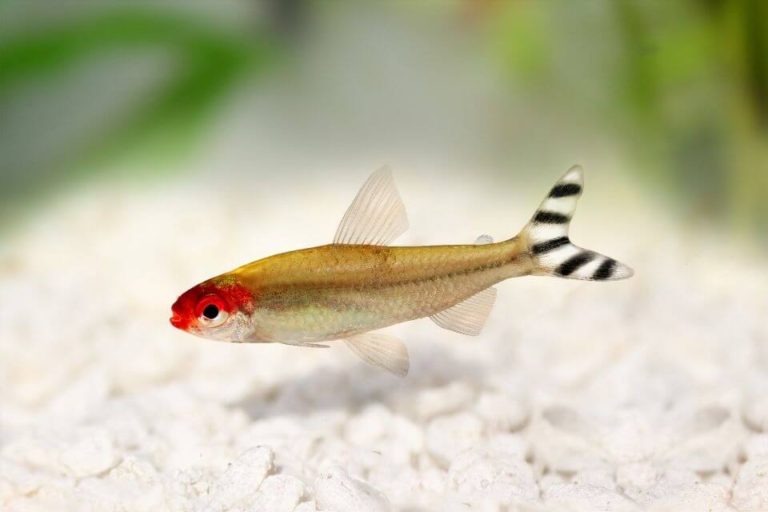Kuhli Loach Care Guide: Diet, Breeding, Tank Mates, Tank Size and Setup
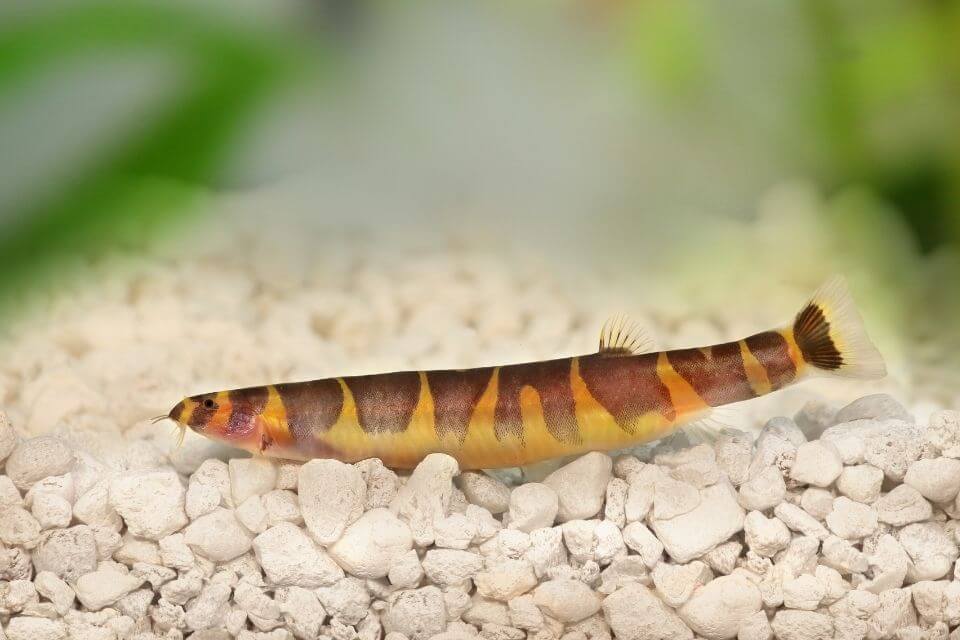
The Kuhli Loach fish is petite-size bottom-dweller freshwater fish species that spend most of their time at the aquarium bottom.
It is a very peaceful fish that lives amidst the aquarium vegetation, coming out occasionally when the lights are dim. It is among the popular aquarium fish because they add a significant advantage; cleaning the tank.
This fish typically does this by feeding on algae and leftovers in the tank. These Loach species is a luxury pet that not only improves your home’s aesthetic value but also raises your home’s worth.
Having this pet in your aquarium also gives your home a sense of peace and quietude, as it typically resonates with the fish’s temperament.
If you’re looking at buying these fish species, but you’re a bit naïve about dealing with them accordingly, be sure to read this Kuhli Loach care guide.
We have provided you with vital insights and in-depth assessments of the different attributes of this fish that you will find fascinating and, concurrently, stunning.
| Quick Facts: | |
|---|---|
| Common Names : | Kuhli Loach, Coolie Loach |
| Origin : | Native to Indonesia and the Malay Peninsula |
| Family : | Cobitidae |
| Scientific Name : | Pangio kuhlii |
| Care Level : | Easy |
| Temperament : | Peaceful |
| Social : | Communiti fish |
| Diet : | Omnivores |
| Size (average) : | Up to 5 inches |
| Lifespan : | Up to 10 years |
| Breeding : | Egg layer |
| Minimum Tank Size: | 15 gallons |
| Tank Environment : | Freshwater, Sandy substrate, Floating Plants, Lots of hiding places, Rocks and Driftwood |
| Temperature : | 73 – 86 °F (22 – 29 °C) |
| Water Hardness : | Not more than 5 dGH |
| Water pH Level : | 5.5 - 7.0 |
Kuhli Loach Fish Overview
The Kuhli Loach fish is a member of the Cobitidae family and is scientifically known as “Pangio kuhlii.” It is also called “Coolie Loach” in the aquarium trade.
This family comprises the world’s oldest freshwater fish that ideally inhabit riverine ecosystems. Apart from the Kuhli Loach, there are close to 260 known species of Loaches in the same fish family.
The Kuhli Loach is an ornamental fish with amber-yellow stripes that laterally alternate with black bands. With the aquarium’s lighting, the fish usually appears more beautiful as its skin reflects light majestically.
However, this fish usually prefers showing itself during the night or when the lights are dimmer, and for this reason, people regard it as a “shy fish.”
Apart from people taming them in aquariums, you will also find them in their natural habitat, including freshwater lakes and steadily moving rivers.
It is an omnivorous fish that feeds on live foods, including larvae, blood worms, vegetable brine shrimp, and even mosquitoes. They also do not shy off from eating pellets and flakes.
Kuhli Loach Size
These Loach species are small Eel-like fish that grows to a maximum size of 5 inches long in their natural habitats. Kuhli Loach sizes can reduce up to 3 to 4 inches long in a captivity environment, such as in aquariums.
Kuhli Loach Lifespan
The average lifespan of a Kuhli Loach is usually 10 years, both in captivity and natural habitats. Nevertheless, if they aren’t well cared for, they are doomed to live for less long with poor medication and food.
If you have no experience dealing with them, please involve an expert to provide the fish with the basics before you catch up with the fundamentals of caring for it.
Appearance, Colors, and Special Markings
These species of loaches have eye-catching appearances, with about 10 to 15 vertically alternating bars of dark brown and amber-yellow bands.

Besides, their underside is usually lighter, making their beautiful blend of color more appealing.
Contrary to the physical buildup of the ordinary fish, Kuhl Loaches typically have dorsal fins starting beyond their middle body, with four barbell pairs around the mouth. Their eyes are also covered with transparent skin, as with most fish.
People often confuse the different types of Kuhli Loaches for each other. Both are equally similar in size, with the same temperament and physique but different coloring. The different types of the Kuhli Loach fish include:
Black Kuhli Loach:
Physically, these fish have completely dark brown bands alternating black bands across their bodies. Also known as the Chocolate Kuhli Loach.
Silver Kuhli Loach:
As the name suggests, this type of Kuhli Loach is typically silver-colored but usually appears yellow at a fast glance. Their appearance is eye-catching, with their skin reflecting a bit of the aquarium lighting, creating a fascinating ambiance in your home.
Behavior & Temperament of the Kuhli Loach
The Kuhli Loaches are ‘night owls’ as they hide for most of the day and come out at night or twilight.
For this reason, many people term them as demersal fish. It means that they only come out to feed at night when it’s all quiet and serene but dash into hiding when the ambiance is lit.
These fish do not mind a few companions in the same tank, even though they are not schooling fish. Usually, it feels as if they find comfort in a school rather than alone, as they will show up in the open more often in numbers than when alone.
This behavior has also made people accord them the name “shy fish,” so if you want to see them more often in your aquarium, put a few of them together.
Besides, these fish are always curious as they seem to sense and explore their surroundings and more often seem to be examining any caves and crevices within the aquarium.
If you happen to leave your filler inlets unprotected, the fish burrow in the sand in reaction. They usually get scared of any modifications that they intuitively see as a threat.
Kuhli Loach Care
Like all fish in an aquarium, it is always important to keep the water well-oxygenated and clean. Good oxygen supply enables them to breathe, and failure to do this, they will suffocate.
The water must be soft and slightly acidic and water should be tropical and should be maintained and have steady parameters. Any temperature fluctuation makes them uncomfortable.
– Kuhli Loach Tank Size
The minimum requirement for Kuhli Loach tank size is about 15 gallons. This is the minimum but it is recommended 20 gallons or more if possible.
To allow for space and free movement, make the tank size fitting for 3 to 4 water gallons for every loach you add to the tank. Typically, it implies that you require a bigger aquarium as you add more Kuhli Loaches in the tank.
– Kuhli Loach Tank Setup
Substrate: Put a soft substrate made up of a mix of fine gravel and sand in the tank. Loaches are very delicate, and coarse gravel can damage them as they scavenge for food.
Besides, this substrate can also support plant roots and facilitate their regular nutrient dosing.
Decorations: Add a few ornate rocks of any size that fit in the tank while allowing for unconstrained movement. Also, top up with a few driftwood pieces with a couple of ‘bolt holes’ masquerades in the form of caves for them to hide in when the need arises.
Filter: You can add an under gravel filter for improved oxygenation in the tank. Besides, these under gravel filters usually help reduce waste that bacteria could synthesize and produce toxins detrimental to the fish.
In addition, ensure that the aquarium’s water is adequately circulating with a turnover of at least 9 to 10 times every hour.
Lighting: Put low to moderate lighting in the aquarium because too much lighting makes these nocturnal fish uncomfortable, especially at night. Kuhli Loaches have rod dominant vision and do not see red.
Therefore, you can use RGB lighting with the red light option for easy viewing at night.
– Water Conditions And Parameters
- Water temperature: Thrive well around 73 – 86°F (22 – 29°C)
- Acidity levels: Prefer neutral waters with 5.5 – 7.0 pH
- Hardness: Up to 5 dGH
To main the water quality at optimal levels, you should do routine water changes in your tank. You must adhere to change 25% of the water every two weeks to make your fish for comfortable living.

– Suitable Plants
When it comes to choosing suitable aquarium plants for these fish species you much Include sufficient vegetation to replicate their natural habitat.
There are a few recommendations below.
- Java Fern
- Cryptocoryne
- Floating Aquarium Plants
- Anubias
– Possible Diseases And Prevention
Sadly, your Kuhli Loach is not indomitable to diseases and illnesses. A common disease among these fish is the Saddleback disease, starting to show on the outside of the fish like a grey or whited clouded area.
This condition can culminate to open sores. Besides, another symptom is the fin rotting. Its contagious infection can spread very fast among the fish population.
ICH or “white spot disease” is also common in these fish species. It shows up as white spots that appear like salt sprinkled on the fish body, and behavior changes such as abnormal hiding behavior and loss of appetite.
Although treatment through medications including Kinaplex can effectively control these diseases and parasites, it’s always best to maintain high aquarium hygiene standards every time.
Ensure that your aquarium water is clean and well-oxygenated consistently and there exists no overdue food remains to invite any forms of parasites. Besides, give your fish a well-balanced diet for healthy development and immune strengthening.
Kuhli Loach Diet And Feeding
Kuhli loaches are omnivorous fish, and while they usually feed on small crustaceans, larva, and riverbed plant materials in their natural habitat, you can give them live food such as worms, small insects, and frozen food.
These fish species are habitual scavengers and will feed on bottom-dwelling material that is dead or mildly alive. They don’t actively hunt for food, and so to add on a meaty diet, you can drop in a few chunks of flesh in the aquarium.
Apart from these foods, you can add some pellets and fish flakes to supplement their diet with additional vegetables to balance their diet.
In addition, there are homemade recipes which you can feed them with severally per day. These include standard homemade gelatin food, meaty, plant, and high protein fish foods.
Kuhli Loach Gender Differences
It’s hard to point out any differences between a male and female Kuhli Loach in their juvenile and youthful stages. However, telling the difference becomes simpler as they grow older.
Males usually have larger pectoral fins with muscular and stern dorsal cross-sections. Besides, they may appear more pigmented compared to the females.
On the other hand, females typically wean when breeding, with their ovaries bulging against their skin and can sometimes be visible as green swellings.
Kuhli Loach Breeding
Breeding Kuhli loaches in captivity require sufficient hiding places because, to some extent, they seem to value more ‘privacy.’ Usually, in their natural habitat, these fish spawn communally in low depth water with plenty of vegetation.
It’s vital to ensure that the water is of good quality so that you can replicate their natural habitat. It should be well oxygenated and free from chemicals, such as those used in medicating. Also, ensure that you get a few floating plants with good rooting.
Do not also forget to maintain the water pH level at 6.5. you can do this by adding small amounts of deionized water or use reverse osmosis to obtain this desired suitable water pH
These fish are good at spawning in pairs, but best to pair a group of adults. From here, they will choose partners among themselves.
To select a mate, the males begin to mouth the vents of the females, and then they will entwine before spawning in a suitable plant cover. When these fish spawn, you will notice greenish eggs entangled in between the roots of the floating plants.
Kuhli Loach Tank Mates
As bottom dwellers, these fish pair well with fish that spend more time at the top of the aquarium. Such fish include the Brown Pencilfish, Cherry Shrimps, Cloud Mountain Minnows, and Otto Catfish.
Kuhli loaches are also compatible with many other small non-aggressive freshwater fish, including the Danios, Tetras, and Rasboras.
To avoid stressing the fish, do not put them together with territorial and bully fish types, including Tiger Barbs, Arowanas, Angelfish, and Bettas. Also, keep away Blue Guramis and Red-Tailed Sharks because they are dominant and extraterritorial.
If you also want to see them more often, find a few other Kuhli Loaches, with their number reaching about 5 to 6. This way, you will see them swimming out of the shades more often and revealing themselves in the open.
Origin, Distribution, And Availability
Originally, the Kuhli Loach native from Indonesia and the Malay Peninsula. They are an Eel body shape fish, renowned for their tank cleaning prowess.
It makes them more popular among aquarium pet lovers as they scavenge for algae and food remains, clearing unwanted debris in aquariums.
For the greater part, these fish require good care in handling, and therefore, an experienced aquarist should handle them. A good reason is that, despite their petite size, these fish are usually prone to diseases and illnesses.
Besides, they are sensitive to medications that need an expert handler to administer for their continued wellbeing. If properly cared for, Kuhli Loach fish can live up to 10 years.
They are not endangered species as they are available in their millions across the world. The IUCN has not yet listed the Kuhli Loach fish species in the red list, exempting them from any foreseeable extinction.
Currently, they are distributed across many parts of the world, both in their natural habitats and tamed aquariums. Their numbers are remarkable in South East Asia, including Singapore, Sumatra, Western Malaysia, Borneo, Java, and Thailand.
They are also found in most parts of North Africa, mainly in their natural habitats.
It is priced at $3 per fish. However, this price changes in different retailers, with prices varying on whether you are purchasing just a few of them or in bulk.
Frequently asked questions
– Where is Kuhli Loach For Sale?
While other types of loaches are banned in a few countries, keeping the Kuhli Loaches in most parts of the world is entirely legal. The fish are not mentioned in the IUCN red list category, dismissing concerns that they may be endangered.
You can find this fish in many pet shops or aquaria across the world. In the united states, you can find these fish in Petco and Petsmart.
However, these fish are not always available all through the year. Since they are wild-caught, Kuhli Loaches are only available seasonally.

– Average Kuhli Loach Price?
Kuhli Loaches are available at throwing prices. Partly, the reason could be that they are not as big as other species that fetch high prices. Most pet stores moderate their prices at around $3, but this price may be subject to change depending on the store you are buying the fish.
Most pet shops retail at discounts if you buy them in bulk. Besides, they will offer free shipping so that your fish reach their new home safely.
– Are Kuhli Loaches Aggressive?
They are typically shy fish that ‘hate’ showing up in the open. In their natural habitat, they don’t come out easily, and spotting them is usually difficult.
In tamed environments, such as aquariums, these fish usually hide among the vegetation, cracks, and crevices, only coming out to the open at night or in dimly lit ambiances.
For this reason, Kuhli Loaches are usually non-aggressive and do not attack other fish in the aquarium. They mind their piece and stay in their own space, with no intention of nipping or perturbing fish.
– Do Kuhli Loaches Need To Be In Groups?
They don’t necessarily need to live in groups. However, if you want them to spawn, you may have to introduce a few others, probably between 3 and 5 per every 20 gallons tank.
Get a few males to pair up with the females and breed among the aquarium’s plants.
Kuhli Loaches are also very shy nocturnal fish that do not move out in the open more often. They will only come out at night or twilight and scavenge for food as they are not comfortable in the open light.
Therefore, if you want to see them out more often, add a few others in the aquarium so that they swim together in the open.
– How Many Kuhli Loaches Should I Get?
Kuhli Loaches fare well among groups of between 3 and 6 in every aquarium with a capacity of 20 gallons or even more. These fish usually have a very low bio-load, and with this capacity, they will dwell stress-free and move out in the open more frequently.
– Do Kuhli Loach Eat Shrimp?
Kuhli fish do not eat live shrimp. However, if provided as frozen dead meat, they usually appreciate it. They are usually mild and non-aggressive, meaning that they do not attack other fish in the aquarium.
They scavenge for food residue lying at the bottom of the tank normally during the night and at twilight.
– Will Kuhli Loach Jump Out Of the Tank?
Kuhli Loaches are not habitual jumpers as they spend most of their time at the bottom of the tank. Nevertheless, do not underestimate their jumping ability.
As a rule of thumb, always cover the tank adequately. It will prevent any occurrences leading to slippages and falling to their death. Covering the tank has other advantages, including blockage of debris and dust that make the water dirty.
Final Thoughts
If you are a fish enthusiast and dream of creating a makeshift aqua ecosystem in your home, getting an aquarium is an ideal option for you. Fitted with Kuhli Loaches inside, it makes your aquarium look elegant and appealing to the eye.
Kuhli Loaches are among the low-level care fish that you won’t find it hard keeping them once you are used to treating them well. Although susceptible to diseases and illnesses, proper diet and clean aquarium conditions will keep them just fine.
Besides, they are little helpers when maintaining a clean aquarium as they eat the algae. Having an aquarium in your home increases its value, both aesthetically and in net value.
With the fish being legal to keep, easy to maintain, and available in plenty at stores and pet shops, including them in your aquarium also makes you stand out among your fellow fish enthusiasts.


